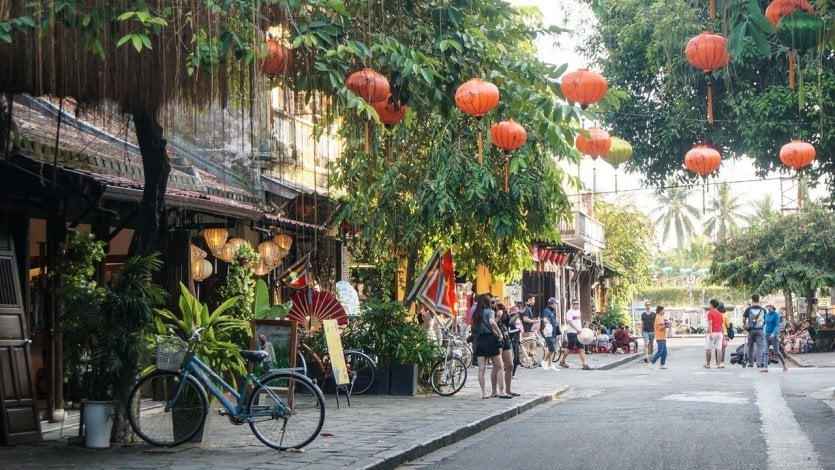
From north to south, Vietnam's magnificent scenery includes white sandy beaches, mountainous landscapes, karst reliefs and tiered rice paddies. The beauty of the region lies as much in its human constructions, pagodas and temples, as in its sumptuous works of nature, such as Along Bay. The maritime crossroads of Asia, Vietnam is a surprising and family-friendly destination, where influences from all over the world mingle, the legacy of the civilizations that have trodden this fascinating land. The city of Hanoi is considered one of Asia's most beautiful capitals. Are you ready for an unforgettable trip to Vietnam? Here, in our opinion, are the must-see and must-visit places in Vietnam!
1. Vietnam's capital, Hanoi
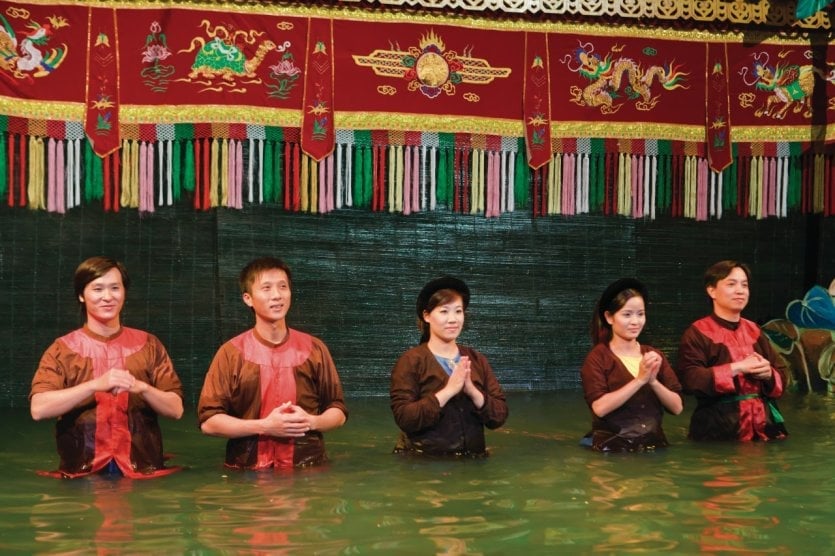
In Hanoi, Vietnam's thousand-year-old capital, pagodas and the remains of the ancient citadel stand side by side with the Art Deco facades of colonial houses and the pediments of Soviet-inspired buildings. It's a pleasure to walk under the canopy of trees that rival the monuments, around the many lakes that create the space of a neighborhood and invite contemplation. We recommend a visit to the Temple of Literature, Hoa Lo Prison or the Vietnam Museum of Ethnology. And don't miss Hanoi's aquatic puppet show! When the rice fields were flooded, Vietnamese villagers used to entertain themselves by making wooden puppets dance on the water. Accompanied by Vietnamese songs and music played by an orchestra, puppeteers hidden behind a curtain make the puppets dance on the water. One tableau follows another, depicting ancient legends and everyday Vietnamese life. Today, Hanoi' s aquatic puppet theaters offer a surprising and fascinating show, lulled by the poetry of water play.
Book your ticket for the Hanoi waterpuppet showhere and avoid the long queues at the theater entrance.
2. Tran Quoc, the capital's oldest pagoda
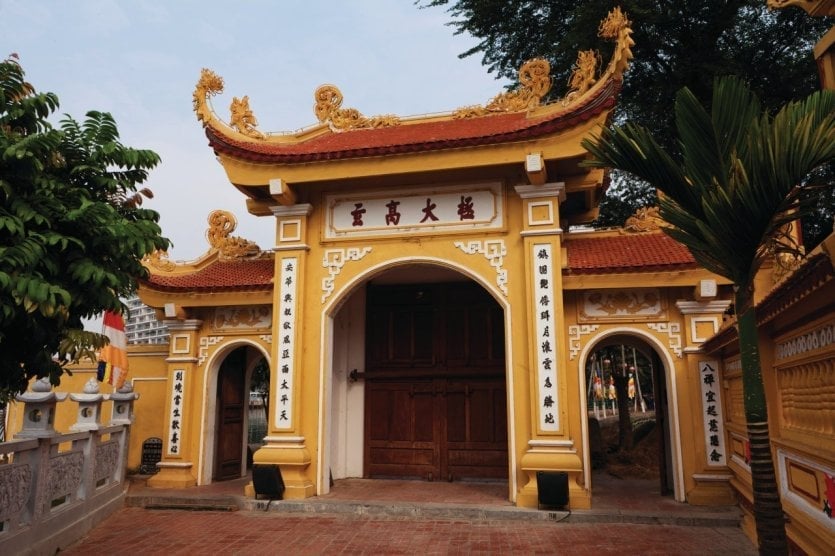
The Tran Quoc pagoda is the oldest in Hanoi. Built in the 6th century during the reign of King Ly Nam Dê, it was then called Khai Quoc, meaning "the foundation of the kingdom". Transferred to its present location in 1615, it was renamed Tran Quoc, meaning "Defense of the Kingdom". Restored in 1815 and surmounted by a brick bell tower, this 15-metre-high, 11-storey pagoda stands on a peninsula jutting out into the western lake. Once home to an important school of Buddhism, it is now a place of worship revered by locals and visitors alike.
We recommend that you visit Hanoi on this guided tour, which will take you to all the city's must-see places, such as the Ho Chi Minh complex, Ba Dinh Square, Tran Quoc Pagoda and more.
3. What to do in Vietnam Nha Trang and its dream beach
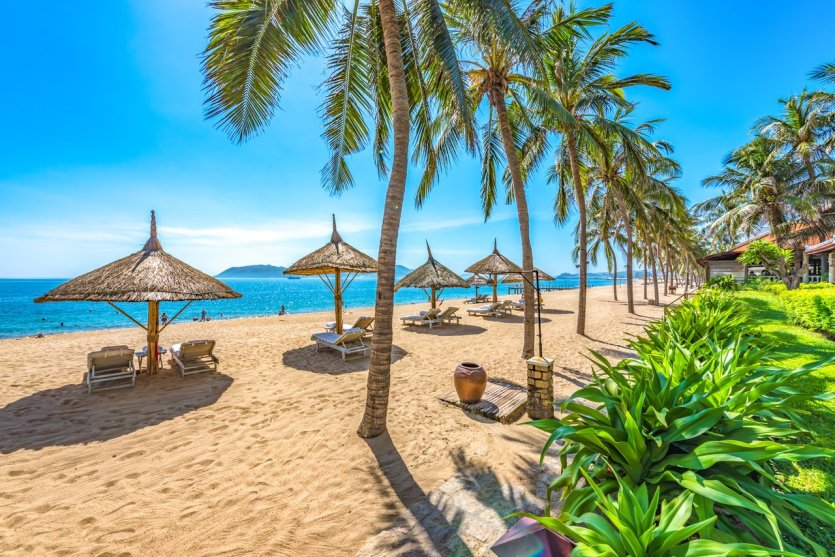
Capital of Khanh Hoa province, the city of Nha Trang offers a magnificent landscape, much appreciated by tourists. Its bay is often considered one of the most beautiful in the world. With its Yersin museum, Long Son pagoda and Cham temple, Nha Trang is a highly cultural city offering a wide range of activities. On the one hand, it's a city where buildings are springing up at an impressive speed; on the other, it's a 7 km-long beach paradise, mountains and seemingly boundless nature. A paradoxical city, Nha Trang is not devoid of charm, and many visitors come here to enjoy the region's renowned diving trips and admire the beauty of the seabed.
Discover the highlights of Nha Trang on this guided tour, which takes in the colonial-era Christ the King Cathedral, the great Buddha statue of Long Sơn at Long Son pagoda, the ancient Po Nagar temple, built by the Cham people in the 8th century. You'll also enjoy panoramic views of the coastline and mountains from the Hon Chong promontory.
4. The caves of Tam Côc, the other Bay of Along
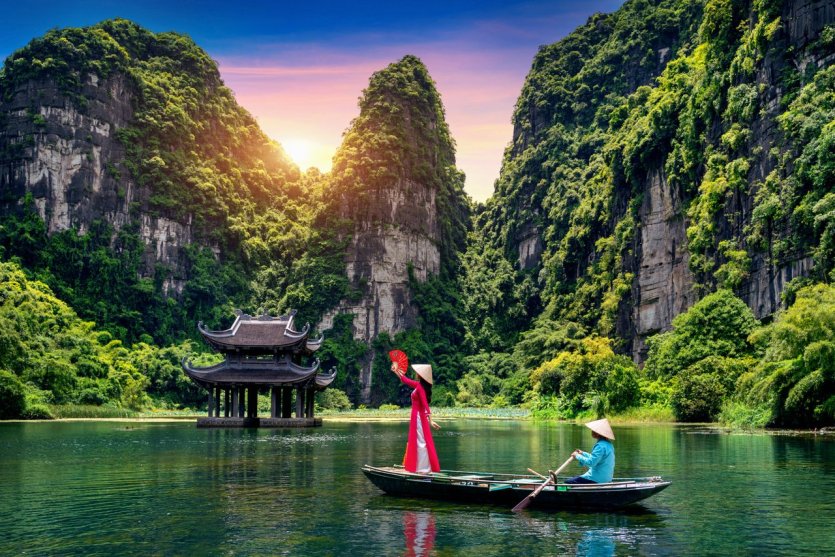
Commonly referred to as the terrestrial Bay of Along, Tam Côc owes its nickname to its karst relief. The landscapes, whether on land or sea, are breathtakingly similar. The famous Tam Côc caves can only be visited on the small boats that glide along the Ngo Dong River (you can book your excursion in advance by clicking right here!). A visit to these three impressive caves immerses the visitor in a splendid setting of lush vegetation, rice paddies at the foot of the mountains and captivating wildlife.
5. What to do in Vietnam Visit the old town of Hôi An
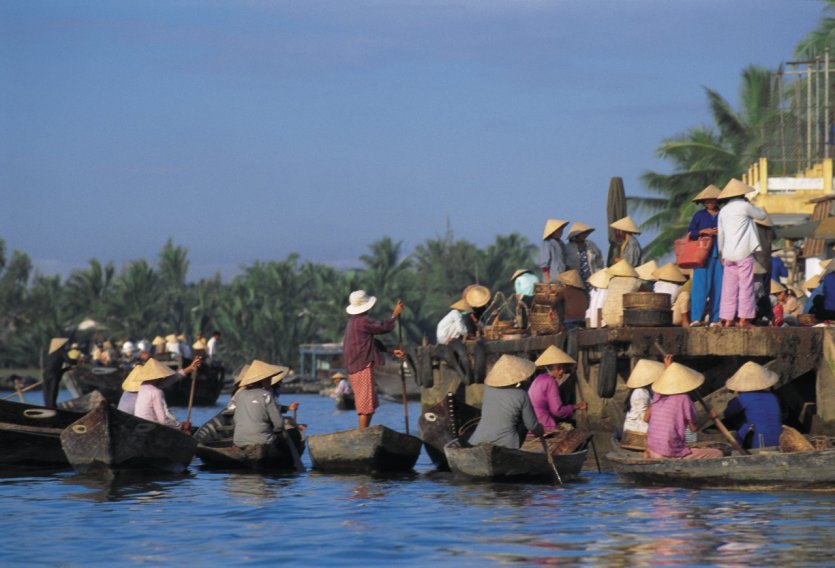
One of Vietnam's less touristy places to discover, Hôi An is a small village in Quang Nam province, with magnificent, authentic architecture. Listed as a Unesco World Heritage site in 1985, it is made up of wooden dwellings dating from the 17th and 18th centuries, and more than 1,000 sumptuous buildings, such as the Quan Công Temple, litter the village. Once the trading port of Asia, the city has retained its original function, and is still inhabited today. An exceptionally well-preserved vestige, Hoî An reflects the influence of the Sa Huynh indigenous cultures, as well as that of the foreigners who have stayed here - Indians, Chinese and Westerners.
6. Strolling through the ruins of My Son near Hôi An
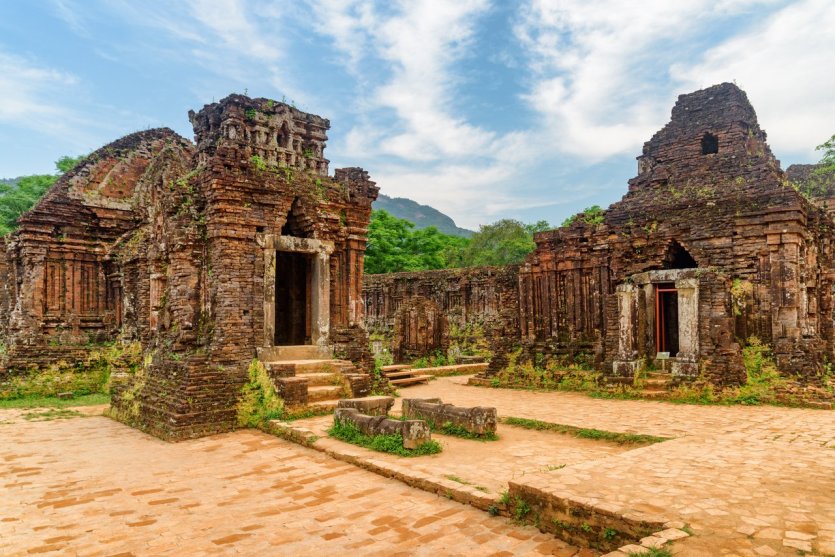
For most of its existence, the sanctuary of My Son wasthe religious and political capital of the Champa kingdom . The remains of the tower temples you can admire today bear witness to the splendour of a kingdom that has now faded, but which exerted a major influence on the region for almost seven centuries, from the 7th to the 13th century. At the entrance to the site, a small museum provides an interesting historical perspective and showcases the work of archaeologists. A word of advice: come early, at first light, to avoid the tourists and take full advantage of the magic of this site. We recommend that you book this guided tour from Hoi to explore the My Son sanctuary at dawn with a local guide.
7. What to do in Vietnam See Hué, the ancient capital
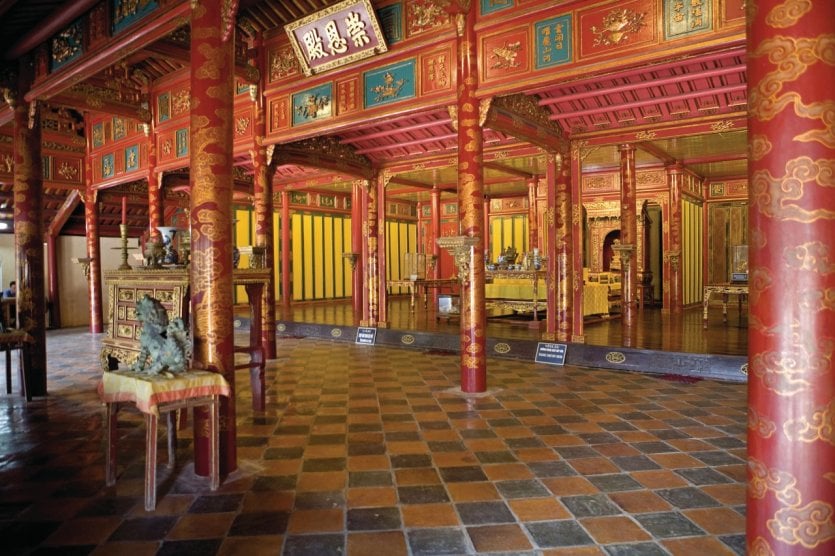
A World Heritage site, Hué is the former imperial capital of Vietnam . A cultural and religious center, the city abounds in magnificent pagodas and temples. Although the city suffered greatly during the war, it has lost none of its splendor. Along the Perfume River are numerous tombs, including those of the emperors of the Nguyen imperial dynasty, which ruled Vietnam from 1802 to 1945. Tourists will discover the Pagoda of the Celestial Lady, or "Thien Mu", built in 1844 and standing 21 metres high. This citadel, inspired by the Forbidden City, also houses an imperial museum and the Temple of Literature. All of which makes it a must-see on any trip to Vietnam.
This guided tour of Hué will introduce you to the ancient imperial citadel of the city of Hué, admire the most beautiful royal tombs of the kings of the Nguyen dynasty and enjoy a breathtaking view of the city from the Thien Mu pagoda.
8. Vibrant Ho Chi Minh City
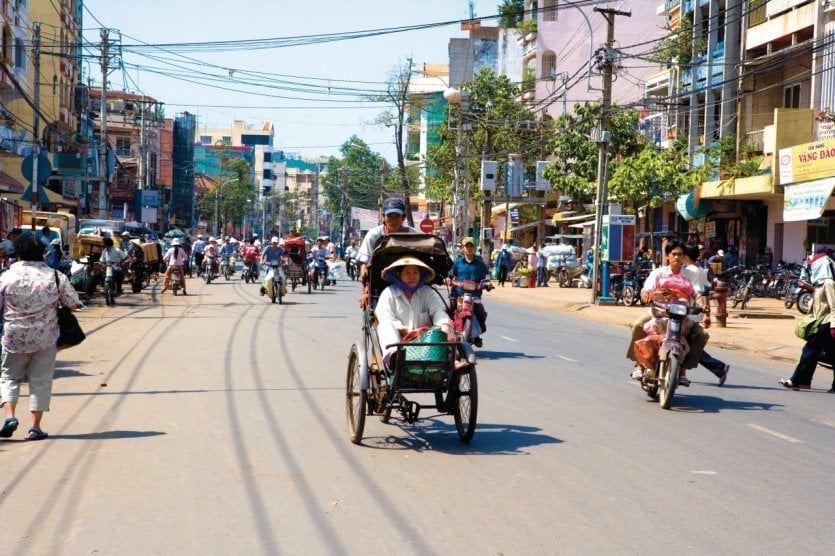
Hô Chi Minh-Ville is Vietnam's most populous city, accounting for almost 10% of the country's population. Formerly known as Saigon, it has undergone Khmer influence several times throughout its history. It took the name Hô Chi Minh-Ville in 1975, but even today, many continue to call it Saigon. Each district of the city is unique, from colonial Saigon to the Notre-Dame Capital, from Chinese Town to the more modern New Saigon... It's impossible not to visit Dông Khoi, the main artery with its many stores. A few hours from the bustling city, the Caodaïste temple at Tay Ninh invites you to discover this religion which combines Hinduism, Christianity and Buddhism. Don't miss a visit to the Củ Chi tunnels ona guided tour you can book here, which will take you back in time to learn how this vast underground network was used during the Vietnam War.
9. The Reunification Palace or Dinh Thông Nhât in Hô Chi Minh-Ville
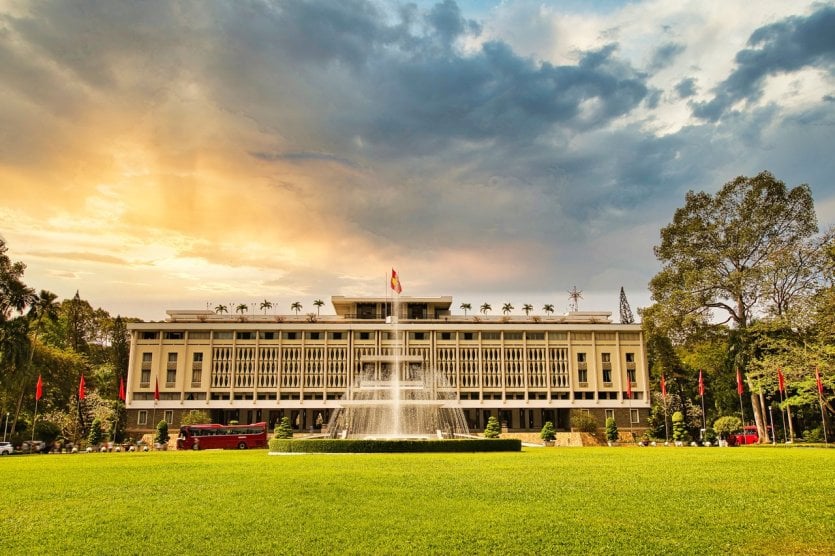
When visiting Hô Chi Minh-Ville, it's impossible to miss the Reunification Palace, also known as Dinh Thông Nhât.
This building, erected during the French colonial period in the 19th century, occupies a crucial place in the country's history, symbolizing national reunification after thirty years of conflict . The image of the tank that broke through the gates at 11:30 am on April 30, 1975, marking the end of the Republic of Vietnam, is still vivid in people's minds. Known as the Norodom Palace, it was occupied by President Ngô Dinh Diem when the French left. On the second floor, in the Phu Dau Rông (Dragon's Head) room, the President received foreign delegations. A phrase engraved in gold letters on a red velvet background catches the eye: "The water flows, the mountains crumble, but the people and the country remain immovable in the face of adversity and bad weather."
Learn more about the Vietnam War on this this guided tour of Ho Chi Minh City's War Remnants Museum in Ho Chi Minh City, where you'll discover the magnificent interiors of the Independence Palace.
10. The Mekong Delta and its river life
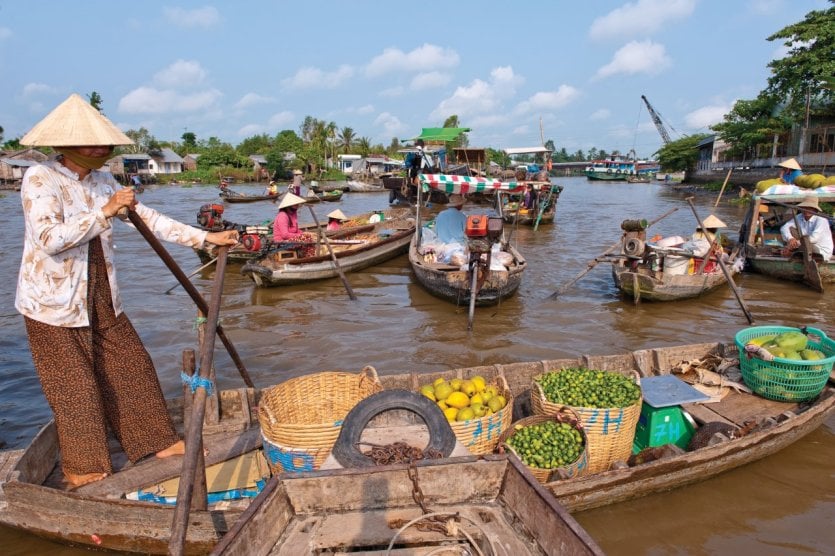
The Mekong is a 4,500 km-long river that flows through China, Burma, Laos, Thailand, Cambodia and finally Vietnam, where it is known as "Sông Cuu Long", in French "la rivière des Neufs Dragons". The most fertile region in the country, thanks to the multitude of canals that make it up, it generates a very active river life. Boats laden with colorful fruit move through this magnificent floating market. Between impressive Khmer pagodas, heavenly beaches and charming little villages, the Mekong Delta is a dazzling and highly exotic river.
Immerse yourself in the local culture of the Mekong Delta on this guided tour departing from Hô Chi Minh City. Enjoy an unforgettable sampan ride along picturesque waterways, visit a coconut farm and the Vinh Trang pagoda.
11. Along, the most beautiful bay in the world
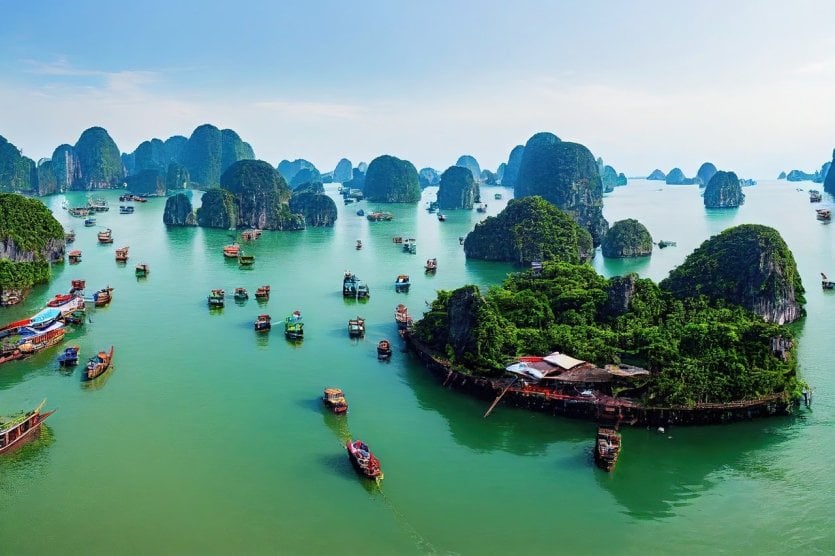
One of Vietnam's must-see bays, traditionally known as "Ha Long", Along Bay is home to 2,000 islands and islets, forming a splendid landscape ideal for a romantic getaway for two. Historical and archaeological remains dating back over 3,000 years have been found on some of these islands. An exceptional natural site, it was declared a World Heritage Site by UNESCO in 1993. The bay has also been the scene of several major battles in which Vietnamese national consciousness was forged. Today, this bay of rare beauty is a tourist attraction that mingles with the daily life of the locals. Interested in discovering this mythical bay? Book your croisière day trip to Along Bay!
12. Hiking in the Sa pa region
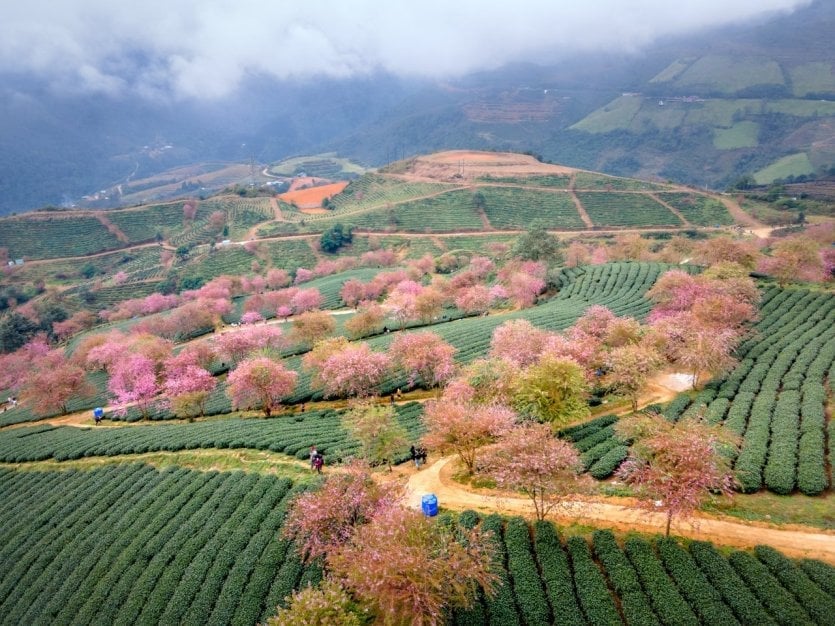
Situated in the heart of Vietnam's northern mountains, the town of Sapa is a popular destination for travelers, especially hiking enthusiasts. Sa pa is the starting point for an exceptional high-altitude trek, during which hikers stop off at picturesque villages inhabited by ethnic minority communities, notably the Black H'Mong and the Red Dao. The rice terraces also evoke the emblematic panoramas of the Sapa region, their hues changing with the seasons. During this unforgettable trekking experience through the Vietnamese countryside, it would be unforgivable not to experience a cable car ascent of Mount Fansipan, the country's highest point. Adorned with Buddhist statues, pagodas and eateries, it offers a truly exceptional view from its 3,142-metre altitude
Would you like to discover the valley's traditional cultures and local diversity? Book your guided hikehere, including lunch in a local house in one of the villages.
13. Phong Nha cave
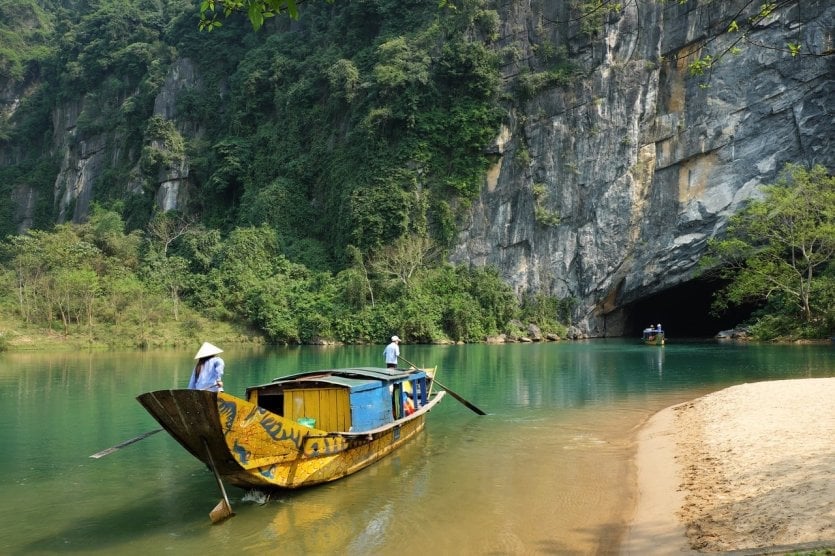
Carved by the waters of the Chai River, Phong Nha Cave is located in the heart of Phong Nha-Kẻ Bàng National Park, a UNESCO World Heritage Site. Access to these underground tunnels is exclusively by boat. The stalactites and stalagmites, which adorn the vast walls of these cavernous passages for around 1 km, offer a striking spectacle to be admired and, as you progress deeper, the landscape metamorphoses into a spectacular vision.
14. Son Doong Cave, the world's largest cave
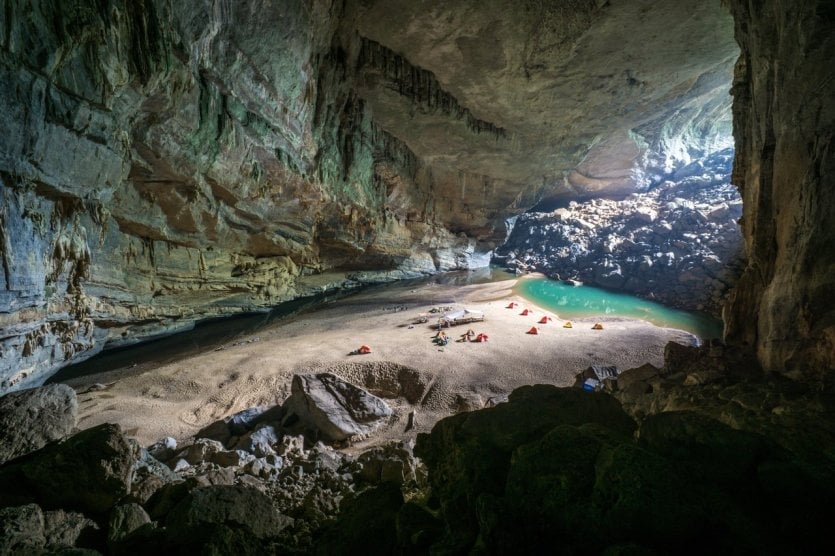
Hang Son Doong Cave, also known as Son Doong Cave in Vietnam, is so large that it contains its own jungle and river, and could hold a 40-storey building. The cave entrance was discovered by a local man in 1991, but he was unable to visit it due to the huge crevasse at the entrance. It was therefore only explored by British cavers in 2009. Although it is now open to the public, the cave is not easy to visit: to enter, you'll have to abseil down 80 metres. Only an agency is authorized to organize visits, which take the form of a 4-day expedition (including 3 nights' bivouac) in small groups of no more than 10 people. On the program: 17 kilometers of hiking (trekking), 8 kilometers of underground exploration (caving), a positive vertical drop of 800 meters and a 90-meter climb.
15. What to do in Vietnam See the Dragon River Bridge
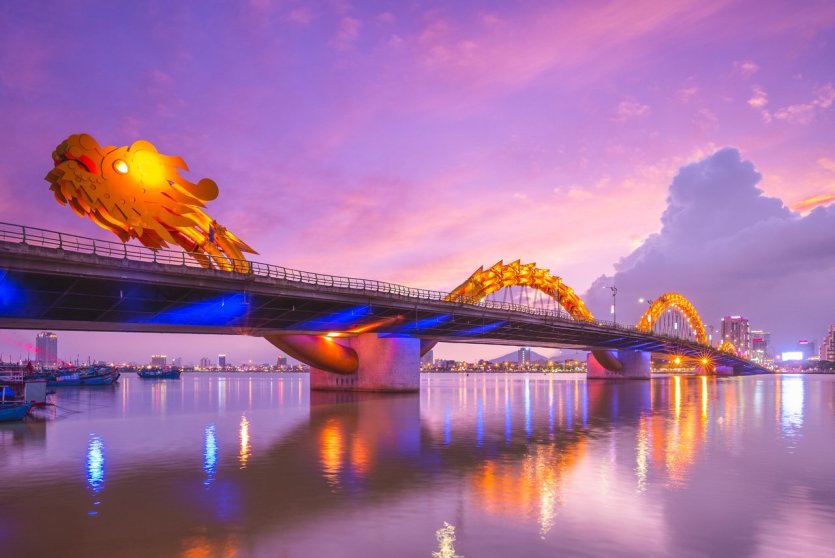
The Dragon River Bridge, also known as the Dragon Bridge or Cầu Rồng, stretches majestically across the Han River in the city of Đà Nẵng. This engineering masterpiece is a suspension arch bridge, boasting a design that evokes a colossal golden dragon. The best time of day to admire this bridge is in the evening, when the play of light seems to bring the dragon's effigy to life. If possible, plan your visit for a Saturday evening, when the dragon's head often spits flames, adding a spectacular touch to the whole. For the record, unlike in France, the number 6 is considered lucky in Vietnam, which explains why the dragon is precisely 666 meters long, stands 66 meters high and has 6 vehicle lanes.
16... And also the Golden Bridge
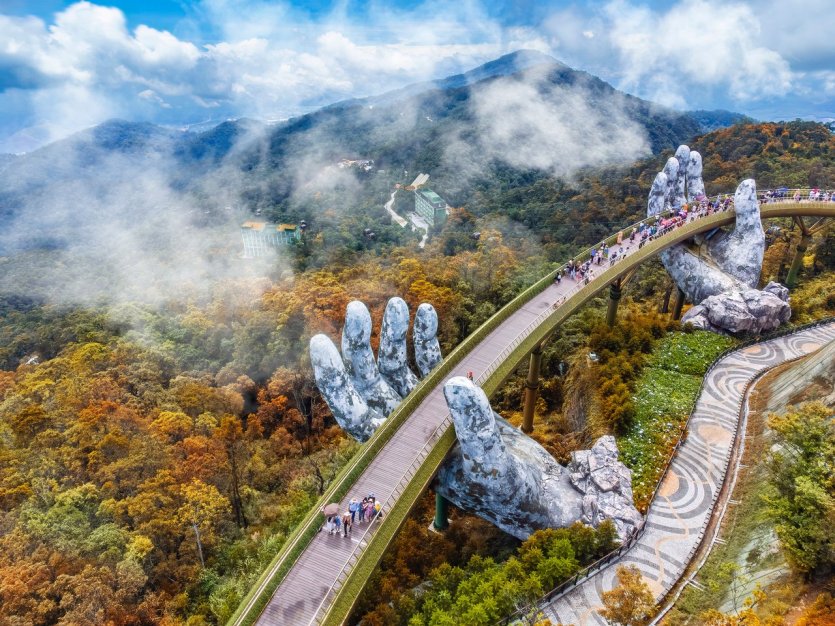
Also known as Cầu Vàng in Vietnam, the Golden Bridge is a 150-meter-long work of art perched atop the verdant Bà Nà hill in the heart of the country. Rising to an altitude of 1,400 metres, it is supported by two imposing sculpted concrete hands, often nicknamed the "hands of God", giving you the impression of walking in the clouds, stimulating everyone's imagination. From the footbridge, you can enjoy the panoramic views afforded by the altitude, while marvelling at the wild flora that adorns the surrounding hills
17. The Đray Nur and Đray Sáp waterfalls

Located twenty-five kilometers from Buôn Ma Thuôt in the province of Đắk Lắk, the Đray Nur waterfall and the Đray SápDe waterfall face each other. Dray Nur is the most popular waterfall with tourists, it also attracts many locals who come here for lively picnics. Spectacular during the rainy season, the falls are not necessarily worth the trip during the dry season . Please note: a small zoo has recently been set up on site, but the treatment of the animals is not the best...
18. The island of Phú Quốc
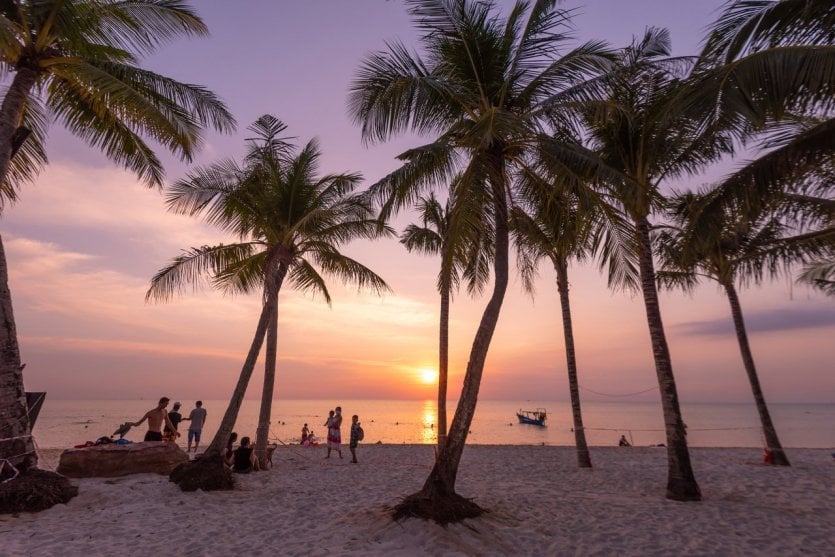
Phu Quoc, Vietnam's largest island, has risen to the top of the country's trendy destinations, attracting mainly an Asian clientele. It's also where the famous nuoc-mâm sauce is made. As well as growing pepper, cashew, coffee and other exotic fruits, the island boasts an enchanting landscape. Between seas, forests, waterfalls, heavenly beaches and lush vegetation, Phu Quoc offers a captivating synthesis of the country, home to a diversity of rare plant species, including precious medicinal plants. Duong Duong is the island's main fishing port and tourist hub. Take a stroll along Long Beach, where a night market comes to life in the evenings. Take advantage of your island getaway to discover the surrounding islands aboard a boat and explore the seabed by snorkeling on this guided excursion!
19. What to do in Vietnam Climb Hang Múa Mountain
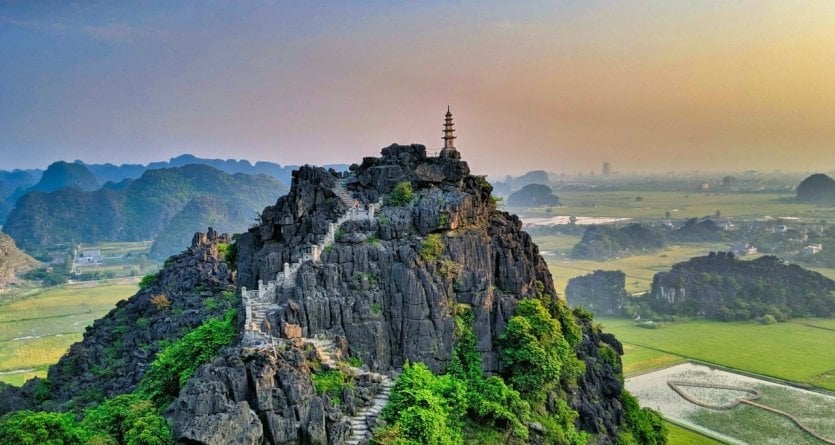
Hang Múa mountain, located in Ninh Bình, is famous for its spectacular views, as well as for the cave of the same name it shelters. At the top of Hang Múa mountain is an 800m2 cave, as well as a pagoda dating back to the Trân dynasty, featuring a dragon enthroned on a rocky outcrop with a breathtaking view. Access to the pagoda is via a long series of stairs. Although the climb can be a little demanding (450 immaculate steps skirting the mountainside), the reward is magnificent, with a splendid panorama of the region from the belvedere stretching from the rice paddies below to the rocky green hills.
20. Cao Đài temple

Built in the 1930s, the Cao Đài temple is a must-see on your visit to the south of the country. Located nearly a hundred kilometers from Hô Chi Minh-Ville, this monument is home to a cult that stands out for its uniqueness. Followers of the Cao Đàiste faith consider that all religions, be they Christianity, Buddhism, Taoism, Islam or any other creed, are in reality one and the same spirituality. The temple's architecture fuses various styles, creating a mosaic of pagoda, church and castle elements. Access is via a side door leading to a room decorated with portraits of such luminaries as Victor Hugo, Nguyên Binh Khiêm (1491-1585, poet and Vietnamese Nostradamus) and Ton Dat Tien (Chinese revolutionary). A small staircase leads to the second floor, where a gallery designed for musicians offers a view of the nave with the temple unfolding before your eyes, with the divine eye painted on a sphere in the center. The walls are richly decorated with frescoes, including those in the entrance hall depicting faith-driven spirits.
21. What to do in Vietnam Savour its balanced, aromatic cuisine
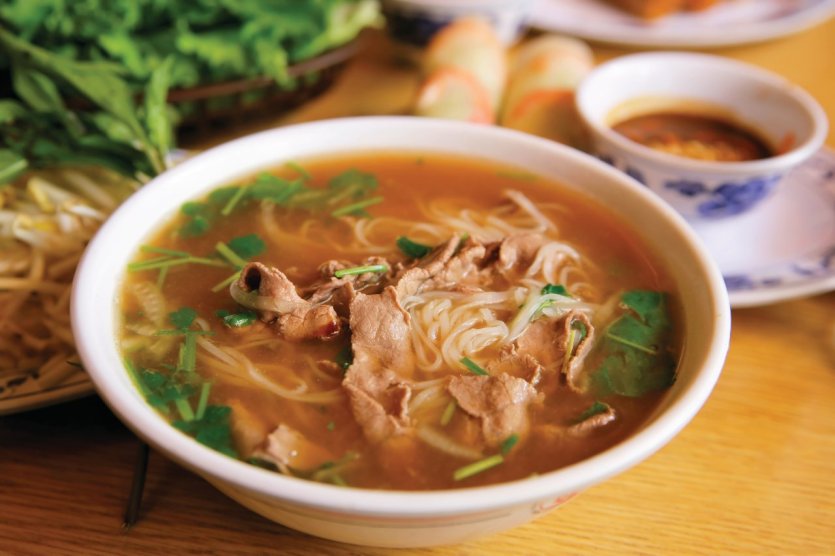
Vietnam is anexcellent destination for vegetarian cuisine. Balanced and inexpensive, it is composed mainly of rice, vegetables, meat and seafood, all enhanced by a host of aromatic herbs. The country's signature dish is pho, a noodle-based soup that's popular from north to south. If you're feeling peckish, banh bao is a popular street food in Vietnam. The queen of street food, it is steamed and filled with meat, vegetables and sometimes an egg. Sweet tooths are likely to be left wanting, unless they indulge in one of the many exotic fruits such as durian, much appreciated by the locals. This fruit is famous for its almond-cream taste and, above all, for its nauseating odor. Sensitive souls please refrain! To spice up your stay, you can also choose to try some unusual specialties such as snake soup...
What's the most beautiful place in Vietnam?
If we had to choose, we'd say that Ha Long Bay, an inescapable national treasure, is one of Asia's most renowned bays, fully deserving of its classification as a Unesco World Heritage Site. Covering an area of 1,500 square kilometers, it features a dazzling array of more than 1,900 islands and islets of varying sizes, each rivalling the next in natural beauty.
When is the best time to visit Vietnam?
The best time is from November to April, during the dry season. To explore the center of the country, including Hué, Danang and Hoi An, the ideal window is between February and July. It's worth noting that the rainy season shifts in relation to the northern and southern regions of the country.
Getting around Vietnam
Vietnam is one of Asia's most popular destinations for backpackers, so getting around is easy. Domestic flights are fast and convenient for covering long distances between major cities. International airports such as Hanoi, Da Nang and Ho Chi Minh City are well connected to domestic destinations. The rail network links many major cities from north to south. Trains offer sleeper options for overnight journeys, which can be an interesting and economical experience. Car and motorcycle rentals are available in some cities, but traffic can be chaotic and driving rules may differ from those in other countries. In the cities, rickshaws (a kind of three-wheeled bicycle) and cabs are common for short urban journeys. But be sure to negotiate the price in advance to avoid problems.
What to do in Vietnam in 15 days?
With 15 days in Vietnam, you have the opportunity to discover a wide variety of destinations and experiences. Here's a suggested itinerary covering some of the country's most iconic attractions:
Days 1-3: Hanoi
Explore the capital Hanoi, visiting Hô Chi Minh's mausoleum, the Temple of Literature and the historic district. Enjoy a cyclo-pousse ride through the old quarter to discover the lively atmosphere and local markets. Attend a traditional water puppet show.
Days 4-5: Ha Long Bay
Embark on a two-day cruise of the magnificent Ha Long Bay, visiting caves and enjoying breathtaking scenery.
Days 6-7: Hué
Travel to Hué, the former imperial capital. Explore the Imperial City and royal tombs, take a boat trip on the Perfume River and visit the Celestial Lady Pagoda.
Days 8-10: Hoi An
Travel to Hoi An, a charming riverside town. Explore the old town, a UNESCO World Heritage Site, with its traditional houses, colorful lanterns and artisan workshops. Enjoy a bike ride to the surrounding countryside or relax on the beach.
Days 11-12: Nha Trang
Head to Nha Trang for a few days of seaside relaxation where you can snorkel or scuba dive to explore the coral reefs and visit the nearby islands to sunbathe on the pristine beaches.
Days 13-14: Hô Chi Minh-Ville (Saïgon)
Travel to Hô Chi Minh-Ville and explore the bustling city, visiting the Reunification Palace, Ben Thanh Market and the historic district. Take a day trip to the Cu Chi tunnels to learn more about the history of the Vietnam War.
Day 15: Mekong Delta
Take a day trip to the Mekong Delta, exploring floating markets, orchards and local villages, then return to Ho Chi Minh City for your departure flight.
This itinerary offers you a glimpse of Vietnam's varied landscapes, rich culture and captivating history. Of course, you can adapt this itinerary to suit your personal preferences and travel pace. Discover our dedicated article "Discover Vietnam in 15 days".
Tempted by a vacation in Vietnam? Take advantage of a discount by booking your travel insurance here , and leave with peace of mind! And to help you organize your vacation, don't hesitate to discover the advantages of working through a local French-speaking travel agency.


